Paleo Meatballs
If you’ve committed to a strict grain-free or Paleo diet, there are some things that, with time, you simply come to accept. Gone are the days of “innocent” nibbling from the bread basket at your favorite restaurant… gone are the stops at your favorite local pizza or sandwich shop (it’s hard to truly enjoy a Reuben on a lettuce wrap).
For most people, this commitment becomes easy and enjoyable over time, thanks to the many benefits the Paleo diet offers. More energy, clearer skin, a leaner body and improved health overall are certainly worth it.
But what about our beloved comfort foods? Food that evokes such a deep sense of nostalgia that, without them, your life feels somewhat incomplete. Foods that remind you of people and times you love. Foods that you still long for – long after the newness of the Paleo lifestyle has taken on a patina.
I’m sure you have a few of your favorite comfort foods in mind right now. For me, one of those foods is meatballs.
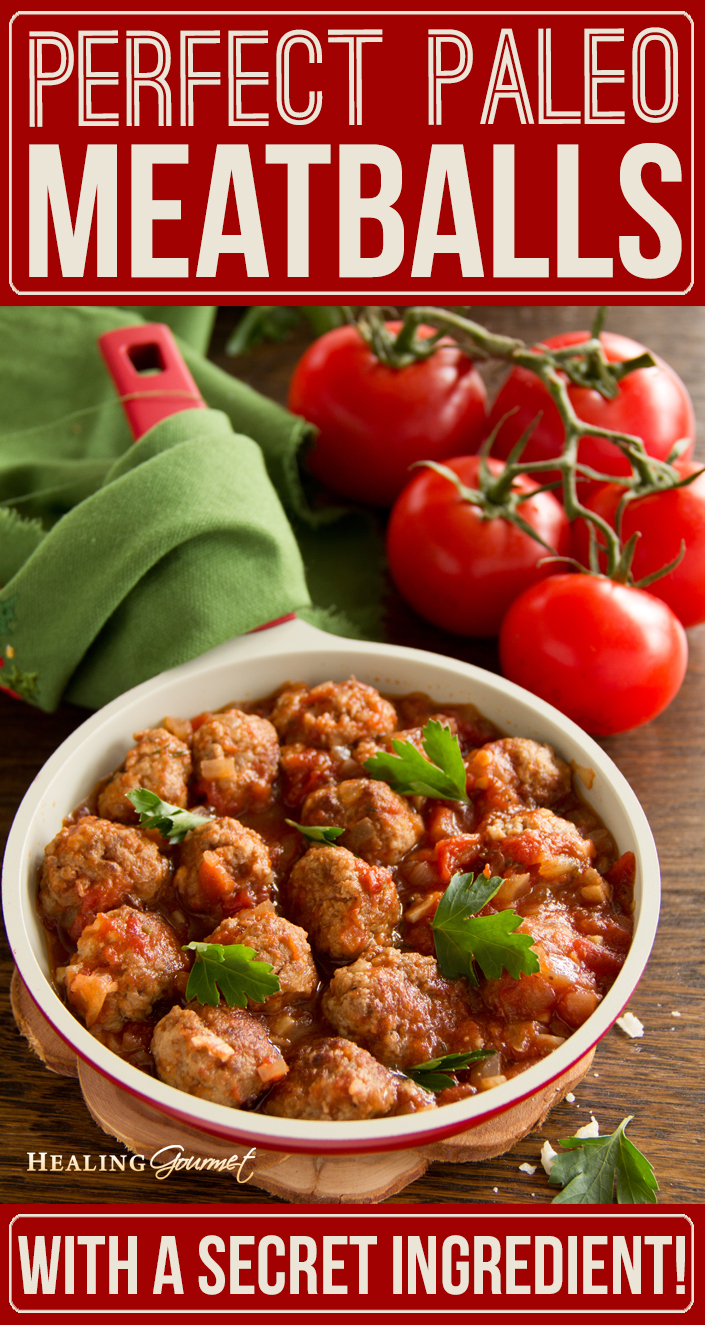
The Secret Ingredient to Making Paleo Meatballs
While making Paleo meatballs might seem like an easy feat (after all, they are primarily meat!), I’ve found that this is one of the most difficult foods to recreate.
The reason? Breadcrumbs.
Despite the reputation as a way to stretch the dollar (and feed more hungry mouths), adding breadcrumbs is actually an important part of the recipe. This step is essential for making truly delicious meatballs. You see, when it comes to the texture of a meatball, breadcrumbs play a vital role. Without them, you end up with tough, puck-like pellets. “Breadless” meatballs don’t absorb the flavors of the sauce they’re cooked in. And they fail to retain adequate moisture.
So, how about “breadcrumbs” made from ground chia, flax, almond flour or coconut flour?
Well, despite the best intentions of Paleo foodies (myself included), these substitutes simply don’t replicate the effects of a true breadcrumb. Chia and flax tend to add a strange “slime” factor. Almond flour and coconut flour create a “mealy” texture due to their density and inability to absorb moisture.
A real breadcrumb acts as a “microsponge” inside of your meatballs. Each spongy breadcrumb helps to separate the meat, providing a cushion that translates to the perfect toothsome texture. Breadcrumbs are also typically carbohydrate-rich. This makes them a great vehicle for trapping moisture. As the breadcrumbs pull that moisture in, your meatballs become infused with flavorful, juicy goodness.
Breadcrumbs are the reason that Paleo meatballs pale (or puck!) in comparison to your classic favorite.
But today all of that changes….
Paleo Breadcrumbs: The Quintessential Ingredient for Paleo Meatballs
Using a rendition of my most-loved Paleo Focaccia Bread, I’ve created a breadcrumb that works perfectly for making moist, juicy, grain-free meatballs.
This super simple recipe is a snap to make. And the Paleo Breadcrumbs stay will keep for months in the freezer. That means they’ll be at the ready for your next batch of meatballs, meatloaf or crispy-crusted pork chops.
Another bonus? The interim step in this recipe makes Paleo Croutons – an indispensable addition to an authentic Caesar salad.
While this recipe will take you a few minutes of prep time, it is a very affordable option that will give you grain-free breadcrumbs for months to come. In fact, you can make about 3 cups of breadcrumbs for around $3 – which rivals the price of the boxed, gluten-and-preservative-laden varieties you’d find at the store.
Here’s what you’ll need:
- 1 box Let’s Do Organic Creamed Coconut
- 6 Tbsp. coconut oil or grass-fed butter
- 2 tsp. psyllium husk powder
- 5 pastured eggs
- ¾ tsp. baking soda
- ½ tsp. sea salt
- ½ tsp. garlic powder (optional)
You’ll also need a quarter baking sheet (preferably stainless steel) and a blender.
Let’s go!
Preheat your oven to 300 F. Grease your baking sheet well. Melt the butter or oil. Warm the creamed coconut in a small bowl of warm water.
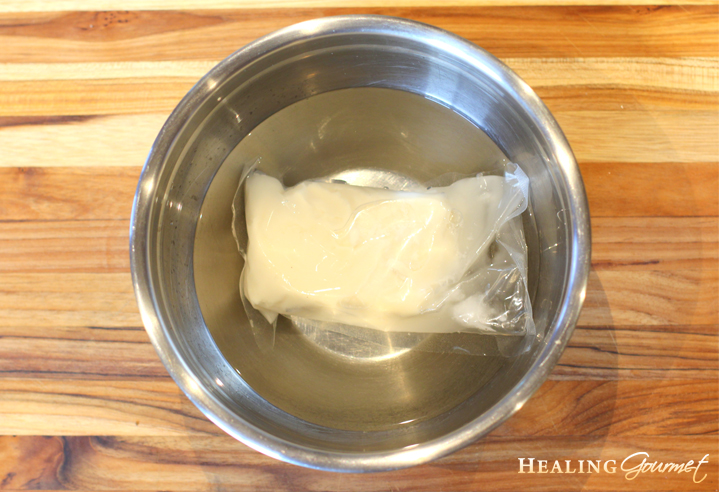
Add the softened creamed coconut to the blender with the eggs, melted butter (or oil), baking soda, salt, psyllium and garlic (if using).
Blend on medium high speed until creamy and golden (no lumps!). Scrape batter into the prepared pan.
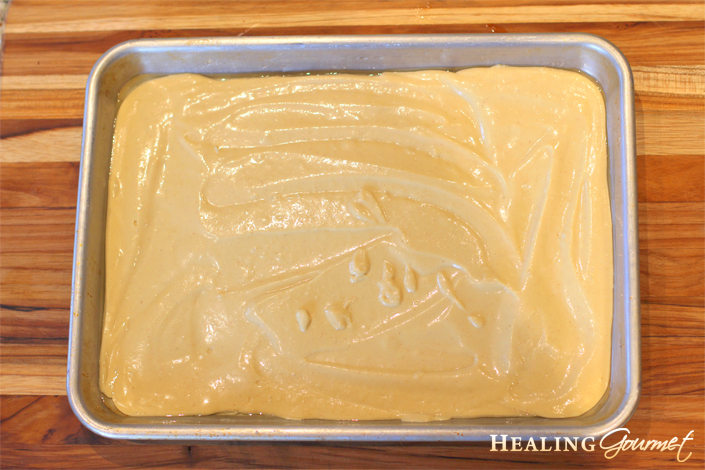
Transfer to the oven and bake 35-40 minutes or until edges pull away and a toothpick inserted into the center comes out clean.
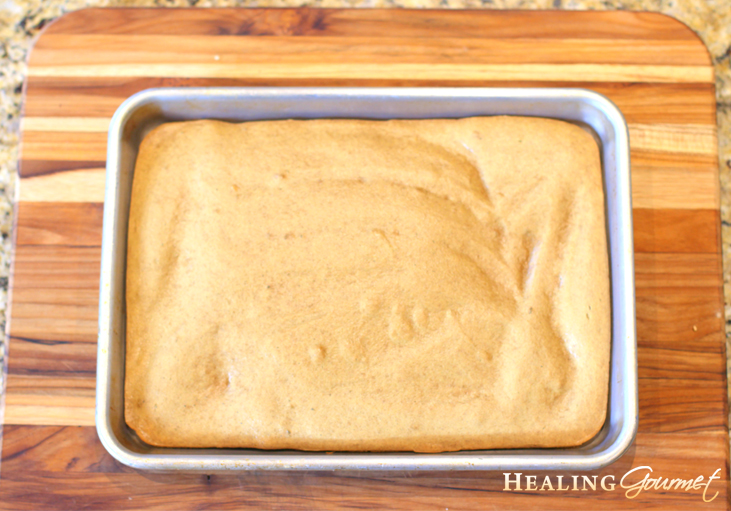
Let cool on a wire rack. Transfer the bread to a cutting board and cut into cubes by slicing lengthwise, then widthwise.
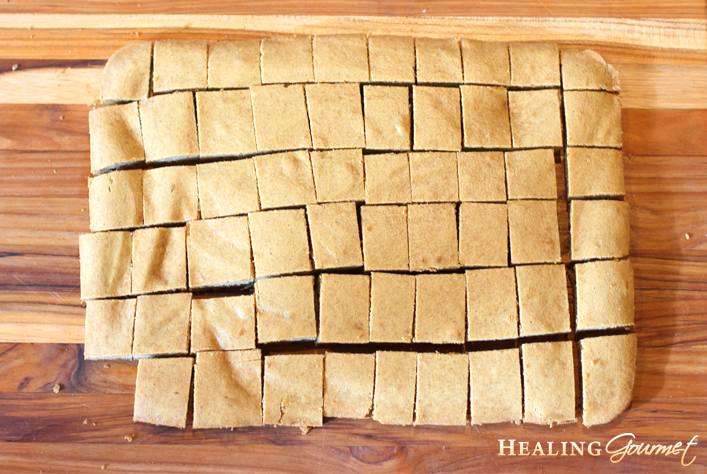
Now, place your bread cubes back onto a baking sheet and toast on “medium” in a toaster oven for 6 minutes. The goal is just to crisp and dry the bread cubes. (Note: You can stop after this step to create the Paleo Croutons I mention above)
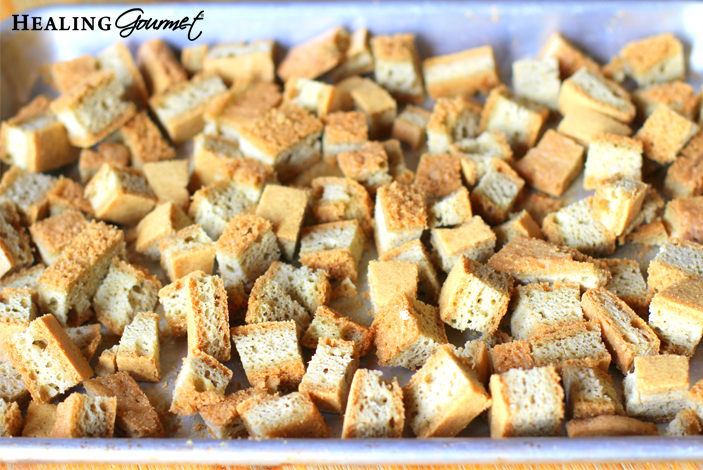
Once crisped, return to blender or food processor.
Pulse gently to create Paleo breadcrumbs.
Using Paleo Breadcrumbs in Your Favorite Paleo Meatball Recipe
Now you may be wondering how these breadcrumbs compare to the standard boxed variety. You can replace traditional breadcrumbs – cup for cup – with these, with no discernible difference in taste or texture.
Need a place to start? Below is one of my favorite Paleo meatball recipes. Also check out my Paleo “Secret Ingredient” Meatloaf for a meat mix that includes super-nutrient chicken livers (tastes so good, even the pickiest kids won’t notice).
Paleo Meatball Breadcrumbs
Servings
3.25
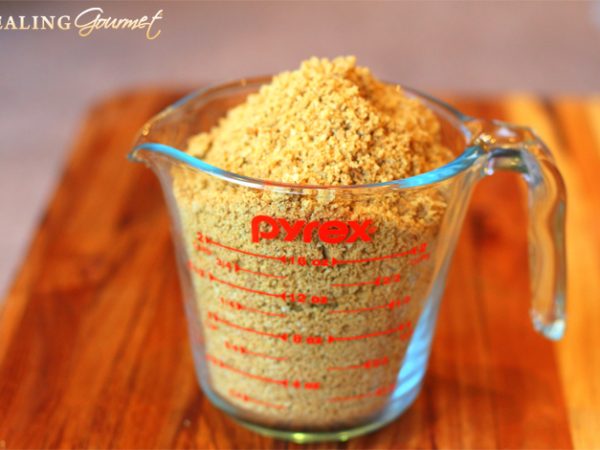
Ingredients
- 1 box Let’s Do Organic Creamed Coconut
- 6 Tbsp. coconut oil or grass-fed butter
- 2 tsp. psyllium husk powder
- 5 pastured eggs
- ¾ tsp. baking soda
- ½ tsp. sea salt
- ½ tsp. garlic powder (optional)
Instructions
- Preheat oven to 300 F. Grease a quarter sheet pan.
- Warm the creamed coconut in warm water to make pliable.
- Add the melted creamed coconut, butter or oil, psyllium, eggs, baking soda, sea salt and garlic to a blender. Blend until smooth and creamy.
- Pour batter into prepared pan, smoothing evenly.
- Transfer to oven and bake 35-40 minutes. Edges will pull away and a toothpick inserted into the center should come out clean.
- Transfer to a cooling rack.
- Use a spatula to remove bread from pan. Place on a baking sheet and slice the bread into cubes.
- Place cubes back onto quarter sheet pan and toast, in a single layer.
- Add toasted cubes to blender or food processor and pulse to create breadcrumbs.
- Use what you need and store the remainder in an air-tight, zip-seal bag in the freezer. Each batch makes roughly 4 cubes of Paleo bread cubes or 3 ¼ cups breadcrumbs.
Nutrition & Macronutrient Ratio
For Nutritional Information, see Paleo Focaccia.
Perfect Paleo Meatballs
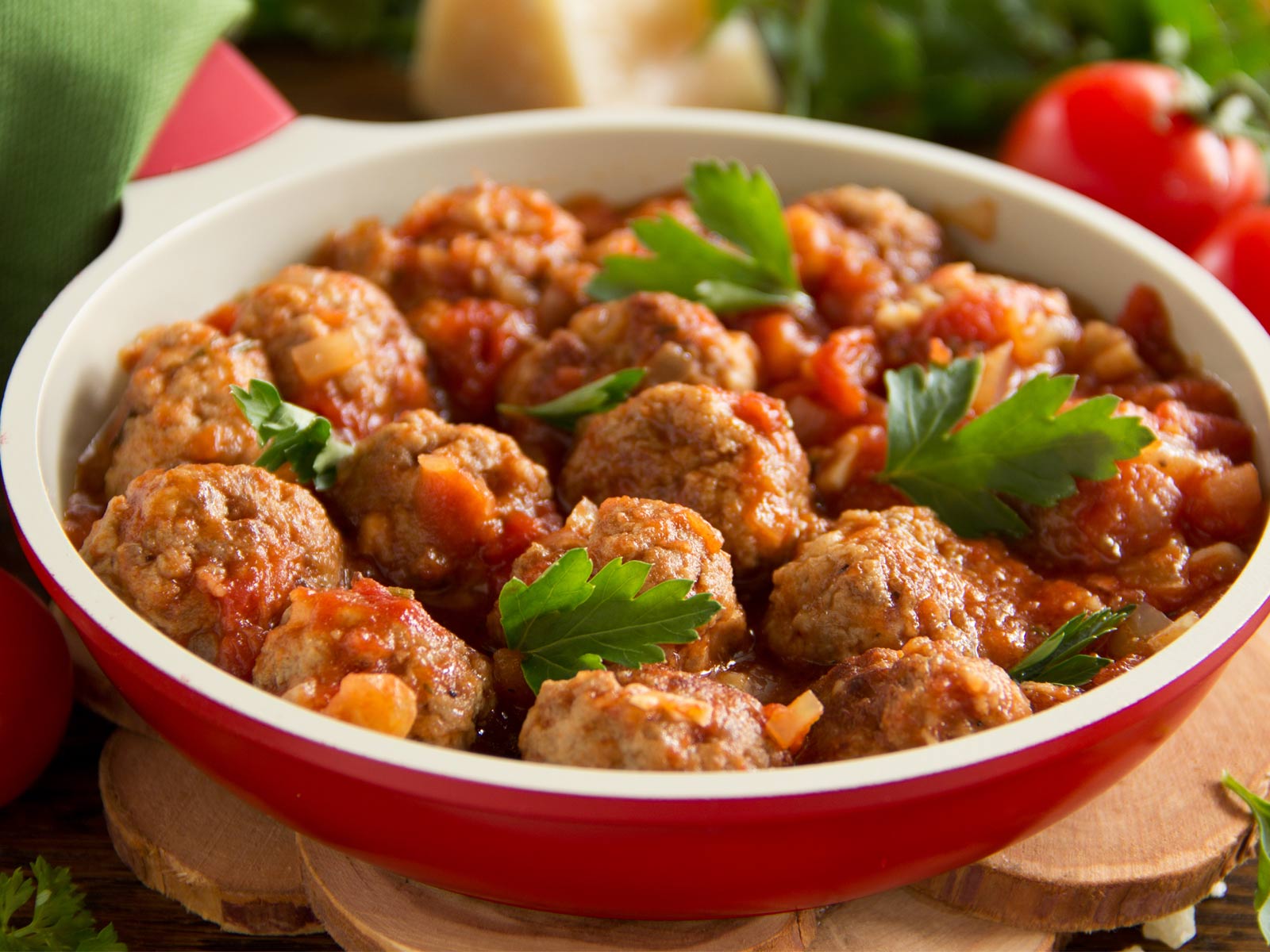
Ingredients
- 2 lbs. grass fed beef (half 75%/half 85% lean)
- 1 lb. pork sausage
- 1 cup Paleo Breadcrumbs (above)
- 2 pastured eggs
- 2 Tbsp. mixed dried herbs (oregano, basil, parsley, thyme)
- 2 tsp. garlic powder
- ¾ tsp. sea salt
- 2 Tbsp. grass-fed tallow, coconut oil or avocado oil (for pan-frying)
Instructions
- Preheat oven to 350F. Grease a baking sheet.
- In a medium bowl, add the beef, sausage, Paleo Breadcrumbs, eggs, herbs, garlic powder and salt.
- Mix gently to combine all ingredients (Do not overmix). Roll into golfball-sized balls.
- In a safe nonstick skillet, heat the tallow or oil. Add the meatballs to the heated pan, taking care to not crowd.
- Brown on all sides, then transfer to the baking sheet. Continue in batches until all meatballs are browned.
- Transfer to oven and bake 15-20 minutes or until a meat thermometer inserted into the center reaches 160 F.
- Remove from oven. Serve or simmer in your favorite sauce.
Do you have a favorite Paleo Meatball recipe? If so, what is your secret to making authentic tasting meatballs… without the grain?
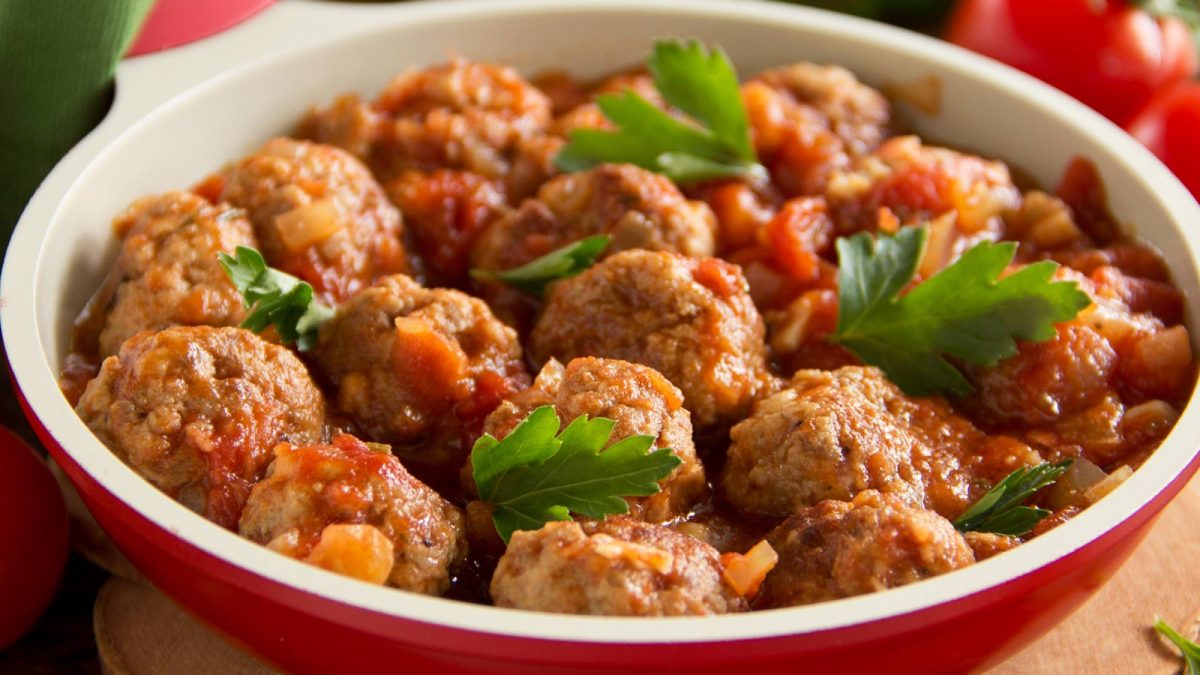
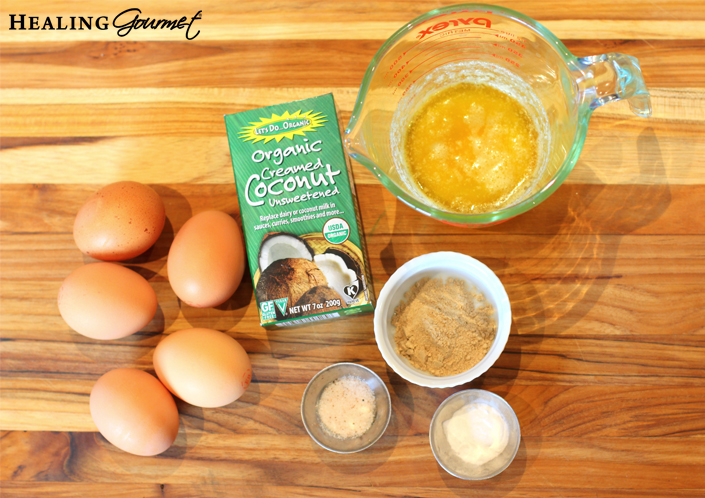

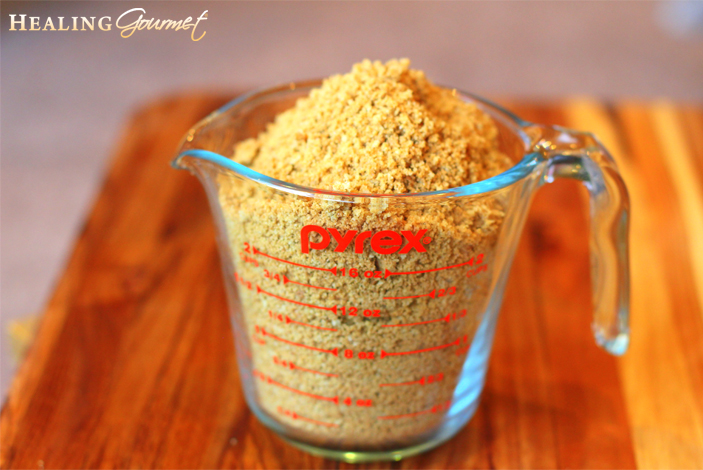
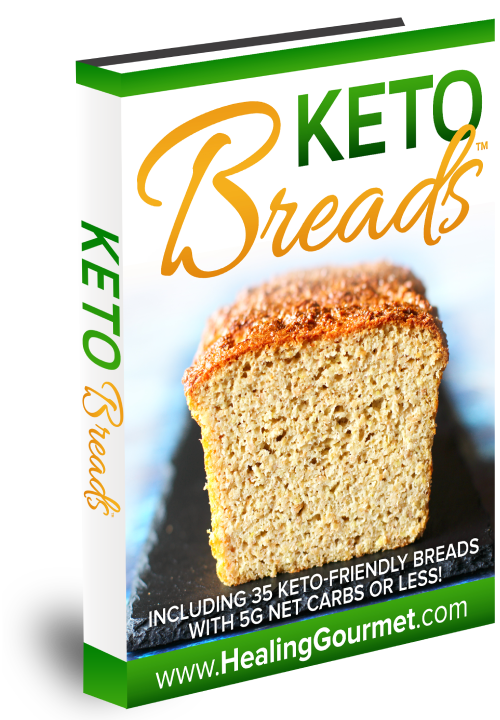
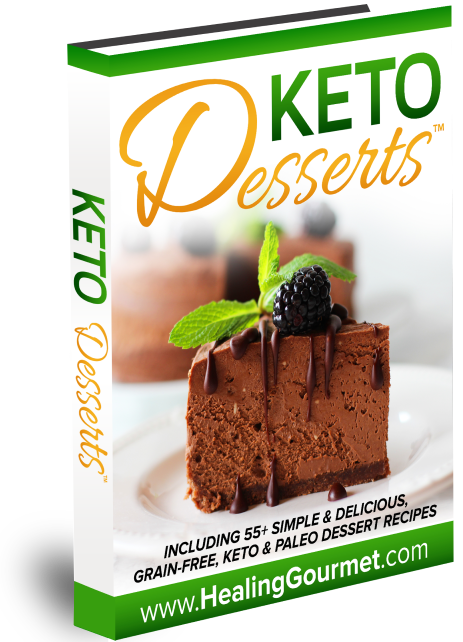

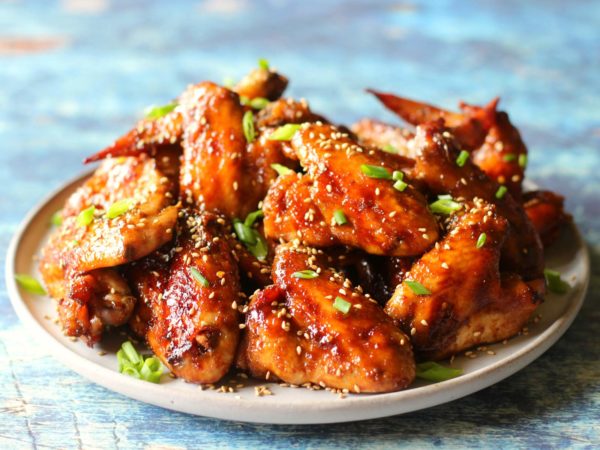
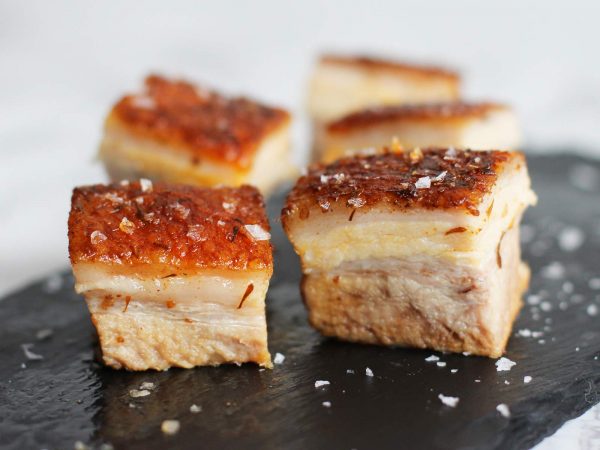
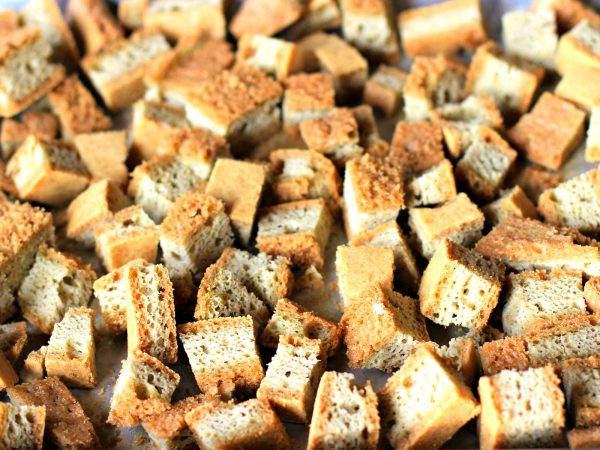
Thank you so much for this recipe. Bread crumbs are one thing missing in my pantry. I will make this shortly. Sounds wonderful. I’m exited
How do I order anything from the Thrive Market? The website doesn’t even allow me to look at anything they sell.
You must join and pay a small membership fee. Well worth it.
Are you including quinoa,sorgham,millet, amaranth, and all the other tiny seeds in the “forbidden” items?
Which seeds can be used to make bakery products?
What seeds and grains can be included in your recipes for baked goods? which are less or the least
objectionable?
Hi Shirley!
It’s really all bioindividual. So many factors impact whether or not a food is “healthy” for someone.
Pseudograins, the grain-like seeds you mention including quinoa and millet, contain saponins and may promote leaky gut and other issues for certain individuals.
Gluten-free grains are notorious for spiking blood sugar, are often contaminated with heavy metals (eg – high levels of arsenic in rice), and may also compromise the delicate gut lining.
Seeds like sunflower seeds are a low-glycemic alternative to almond flour for those who are sensitive and can be replaced cup for cup in recipes using almond flour. Chia and flax are also great in baking, although their mucilaginous properties can cause issues for people with dysbiosis, leaky gut or immune dysfunction.
I’m not trying to be the bearer of bad news, but rather illustrate that each food has its plusses and minuses based on one’s biochemical individuality. When searching for healthy alternatives, it’s important to weight the potential drawbacks – otherwise we risk going from the fryer (gluten)… into the frying pan (arsenic-loaded, rice-based baked goods).
Hope this helps!
Kelley
You say to use a quarter baking sheet (preferably stainless steel). I’ve found plenty of aluminum which I was of the impression that you really don’t want to use. I’ve seen comments that stainless is not a good conductor of heat as well as to line the aluminum with parchment paper (make it safer?). I want to get my kitchen tools right but I’m just not sure what to purchase here…
Hi BJ,
Aluminum has been found to have many negative effects on the body and brain. I use exclusively stainless steel pans or silicone-coated aluminum, like USA Pans. Lining pans with eco-friendly parchment can help reduce exposure to aluminum.
Be Well,
Kelley
Thank you! It is the negative effects of aluminum that I was concerned about. Mystery solved.
How should we store the breadcrumbs and/or croutons? Should they be frozen if not used immediately?
Hi Mendi,
The best way to keep them fresh is freezing in an airtight bag. I keep some in my freezer at all times. When stored properly, they should keep 4-6 months.
Be Well,
Kelley
How large is a quarter sheet pan in inches?
Can the breadcrumbs be dried in the oven for those of us who don’t have a toaster oven? If so, at what temperature?
Hi Daniele,
Of course! I would place the breadcrumbs on a pan in an even layer and bake at about 250 F for 15-20 minutes or until just lightly toasted.
For best storage, place in a freezer-safe zip-top bag, squeeze out the air, and keep in your freezer. They’ll last a long time this way – 6 months or more.
Be Well,
Kelley
Kelly, I really like coconut products but am allergic to it 🙁
I would buy some your products but they contain coconuts, sigh…. 🙁
Thank you so much! I cannot wait to have croutons again in my salads. I’m doing a happy dance.
These sound totally yummy. The only thing missing is a great sauce recipe to go with. Do you have one you recommend?
We put mushrooms, hot and sweet peppers, eggs, and cheese in our pork/beef meatballs. Then top with spaghetti sauce.
Yum, sounds good!
What is the quantity for the creamed coconut please.
Hi Maris,
1 box/ 7 ounces, as shown above.
another poster asked this and it wasn’t answered. Please, what on earth is a quarter baking sheet? Inches would be great to add here. Thank you.
Hi Jody,
We don’t respond to all comments, or general questions that are easily answered with a Google search.
If you need help with a specific product you purchased, please use the Contact Us link at the bottom of the page.
Thank you,
The Healing Gourmet Team
Wondering how long it takes to have a comment returned?